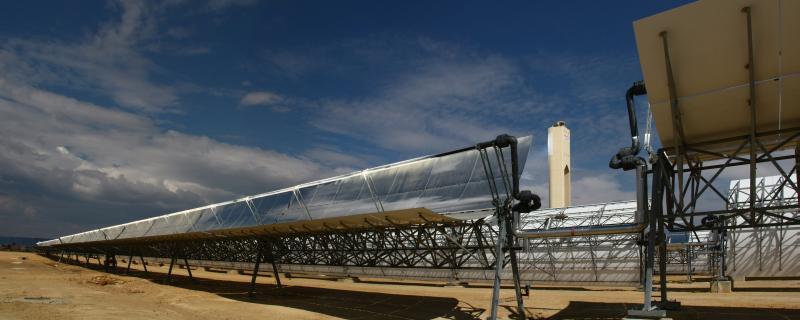
Spain's Abengoa has landed the contract to design, build and operate South America's largest solar thermal power plant. Also known as concentrated solar power (CSP), Chile's Ministry of Energy and public sector development agency Coporacion de Fomento de la Produccion (Corfo) awarded Abengoa the contract to build a 110 megawatt (MW) CSP plant in Chile's northern Antofagasta region, where precipitation is lower, and solar insolation higher, than any other region in the world.
Following through on a recently enacted law that requires Chile's electric utilities to source 20 percent of their electricity from clean energy sources by 2025, the 110 MW plant is to be built with 17.5 hours of power storage capacity, which will enable it to generate and distribute clean, renewable electricity night and day.
CSP to spur clean, sustainable socioeconomic development
Construction of the CSP plant in the Antofagasta commune of Santa Elena, which is slated to begin in this year's second half, will entail placing highly reflective parabolic mirrors (heliostats) that track the sun's movement along two axes on ground mounts.
Built in a circular formation, the mirrors will reflect and concentrate sunlight to a receiver in the upper portion of a central tower. The receiver will transfer the heat to molten salts, which in turn will store and transfer it via a heat exchanger to a current of water -- generating superheated and reheated steam. The flow of steam feeds a turbine capable of generating some 100 MW of electrical power.
The project will stimulate social and economic development across the Antofagasta region, as well as cut carbon and greenhouse gas emissions by reducing reliance on coal and natural gas for power generation, thereby avoiding an estimated 643,000 tons of CO2 emissions per year.
Construction, operation and maintenance of the CSP plant, according to an Abengoa press release, will create "a large number of direct and indirect jobs for construction, development, commissioning and operation of the plant, as well as a network of services that will promote economic growth in the country."
Last October, Chilean President Sebastian Pinera signed into law a bill that requires electric utilities to source 20 percent of power generation from "non-conventional" renewable sources, including solar photovoltaic (PV) and CSP. An associated law shortens the time required for the permitting process from 700 to 150 days.
As per the new legislation, the government has begun holding annual auctions and accepting renewable energy project proposals and bids from developers. Abengoa won the international tender launched by the Chilean Ministry of Energy and Corfo to construct Latin America's first CSP plant.
The Chilean and European Union (EU) governments are providing subsidies to help finance the CSP project, financial terms of which were not disclosed. The Inter-American Development Bank (IADB), Germany's KFW Kreditanstalt für Wiederaufbau, the Clean Technology Fund and Canadian Fund are providing direct financing.
Image credit: Abengoa

An experienced, independent journalist, editor and researcher, Andrew has crisscrossed the globe while reporting on sustainability, corporate social responsibility, social and environmental entrepreneurship, renewable energy, energy efficiency and clean technology. He studied geology at CU, Boulder, has an MBA in finance from Pace University, and completed a certificate program in international governance for biodiversity at UN University in Japan.














